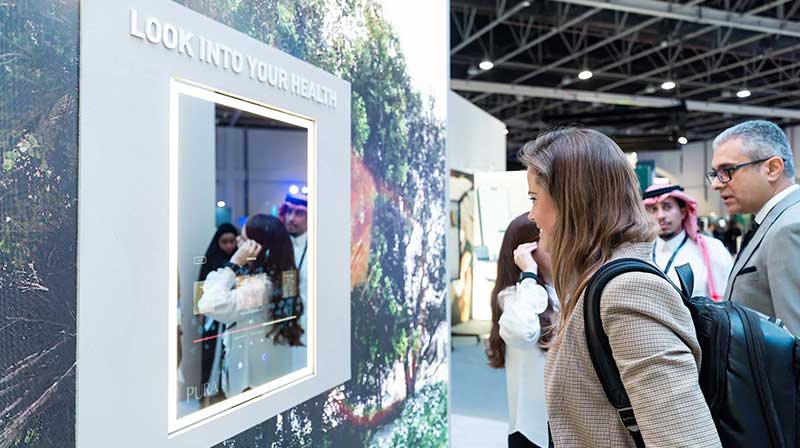From wrist to ward: How 5 countries approach patient monitoring
From AI-powered diagnostics and digital twins to remote biosensors and personalised care programs, innovations in patient monitoring are transforming healthcare delivery worldwide. Here’s how.
| 9 October, 2025 | By WHX Tech |
Share on socials
|
Wondering what the landscape of patient monitoring looks like? According to Sam Shah, Director of Health Data at NEOM, it’s “technology that puts control back in the hands of the citizen” – think more ambient sensors in hand-held devices and less cumbersome wires.
This is quickly becoming a reality, with one such example found in Australia. At Royal Melbourne Hospital a trial utilising contactless cameras is demonstrating the potential for at-home monitoring, minimising the need for hospital visits while also reducing the risk of transmission between patients and clinicians.
“Technology bridges the gap for disadvantaged communities. It enables more inclusive care delivery by extending services to populations who traditionally struggle to access them.” – Dr. Fatih Mehmet Gul, CEO, The View Hospital
In resource-constrained settings like Sierra Leone, where access to traditional monitoring equipment can be limited, VitalPatch biosensors are playing a crucial role in the fight against Lassa fever, providing continuous monitoring of vital signs and enabling early detection of potentially life-threatening complications. This technology underscores the power of innovation to bridge healthcare gaps and improve outcomes in underserved communities.
“I believe that the use of technology will exponentially help build risk prevention model” – Reenita Das, Partner and Senior VP, Frost and Sullivan
Over in the United States, researchers are focusing on the unique challenges of infant care. By combining wearable data with custom AI algorithms, the teams are developing predictive models that can identify subtle changes in vital signs, potentially signalling complications in infants with congenital heart disease before they escalate. This innovative approach offers the promise of earlier intervention and improved outcomes for these vulnerable patients.
Meanwhile in Saudi Arabia, Seha Virtual Hospital is pioneering a new era of preventative care. By creating digital twins of patients – virtual replicas that mirror individual health profiles – clinicians can simulate the progression of chronic diseases like Non-Communicable Diseases and predict potential health issues before they arise. This proactive approach has the potential to transform healthcare from reactive to predictive, empowering individuals to take control of their health destinies.
“Telemedicine will move beyond teleconsultation to a continuous monitoring of patients by a care team.” – Bharat Gera, Founder, Human Centric Healthcare Ecosystem
In the UAE, Aster Chronic Care@Home is demonstrating the power of personalised, connected care. Through remote monitoring of blood glucose and blood pressure coupled with proactive patient outreach, Aster is empowering individuals to manage their chronic conditions more effectively. This integrated approach fosters a deeper connection between patients and caregivers, leading to improved adherence and better health outcomes.
The future of health is creating a more human-cantered approach to care, where data, devices, and dynamic insights converge to empower individuals and transform the healthcare landscape. While these might seem like futuristic concepts, they’re real-world solutions that already making a difference across the globe.



